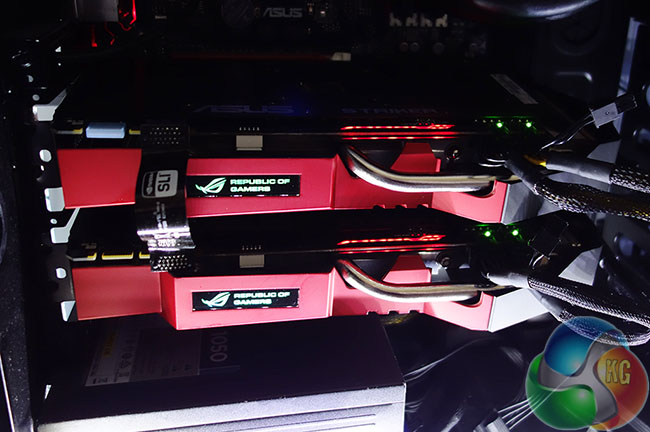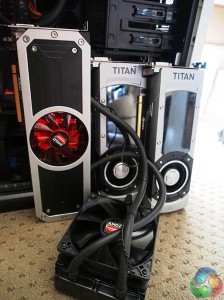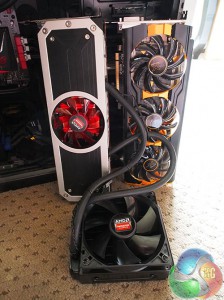Today we test with the latest AMD Catalyst 14.6 Beta driver and the Nvidia Forceware 337.88 driver.

We are using a test rig supplied by PCSPECIALIST and built to our specifications. If you want to read more about this, or are interested in buying the same Kitguru Test Rig, check out our article with links on this page.We are featuring results today with an Apple 30 inch Cinema HD Display at 2560×1600 resolution and an Asus PQ321QE Ultra HD 4K screen running at 4K 3840 x 2160 resolution.

Room ambient was held at 23c throughout testing.
Comparison Graphics cards:

Palit GTX780 JetStream 6GB (902 mhz core / 1502mhz memory)
AMD R9 295X2 (1018mhz core / 1250mhz memory)
Nvidia GTX Titan Black x2 (890 mhz core / 1,750 mhz memory)
Gigabyte GTX780 Ti Windforce OC (1020mhz core / 1750 mhz memory)
Palit GTX 780 Ti Jetstream OC (980 mhz core / 1,750 mhz memory)

Sapphire R9 290X Vapor-X OC (1080mhz core / 1410mhz memory)
Sapphire R9 290X Tri-X (1010mhz core / 1250 mhz memory)
Club3D R9 290X RoyalAce Superoverclock (1050mhz / 1350mhz memory)
Sapphire R9 290 Vapor-X OC (1030mhz core / 1400 mhz memory)
Sapphire R9 280X Vapor-X OC (1100 mhz core / 1500 mhz memory)
Software:
Windows 7 Enterprise 64 bit
Unigine Heaven Benchmark
Unigine Valley Benchmark
3DMark Vantage
3DMark 11
3DMark
Fraps Professional
Steam Client
FurMark
Games:
Thief 2014
Total War: Rome 2
Tomb Raider
Metro: Last Light
GRID 2
Battlefield 4
All the latest BIOS updates and drivers are used during testing. We perform generally under real world conditions, meaning KitGuru tests games across five closely matched runs and then average out the results to get an accurate median figure. If we use scripted benchmarks, they are mentioned on the relevant page.
Some game descriptions edited with courtesy from Wikipedia.
 KitGuru KitGuru.net – Tech News | Hardware News | Hardware Reviews | IOS | Mobile | Gaming | Graphics Cards
KitGuru KitGuru.net – Tech News | Hardware News | Hardware Reviews | IOS | Mobile | Gaming | Graphics Cards



I know they have less memory on board, but how would a couple of 3GB R9 280x’s in crossfire fare against these?
How come the 6GB 780 is thrashing the 780TI’s in the Ungine benchmarks? Surely they don’t require that much ram?
Oh I see, it’s 2 in SLI.